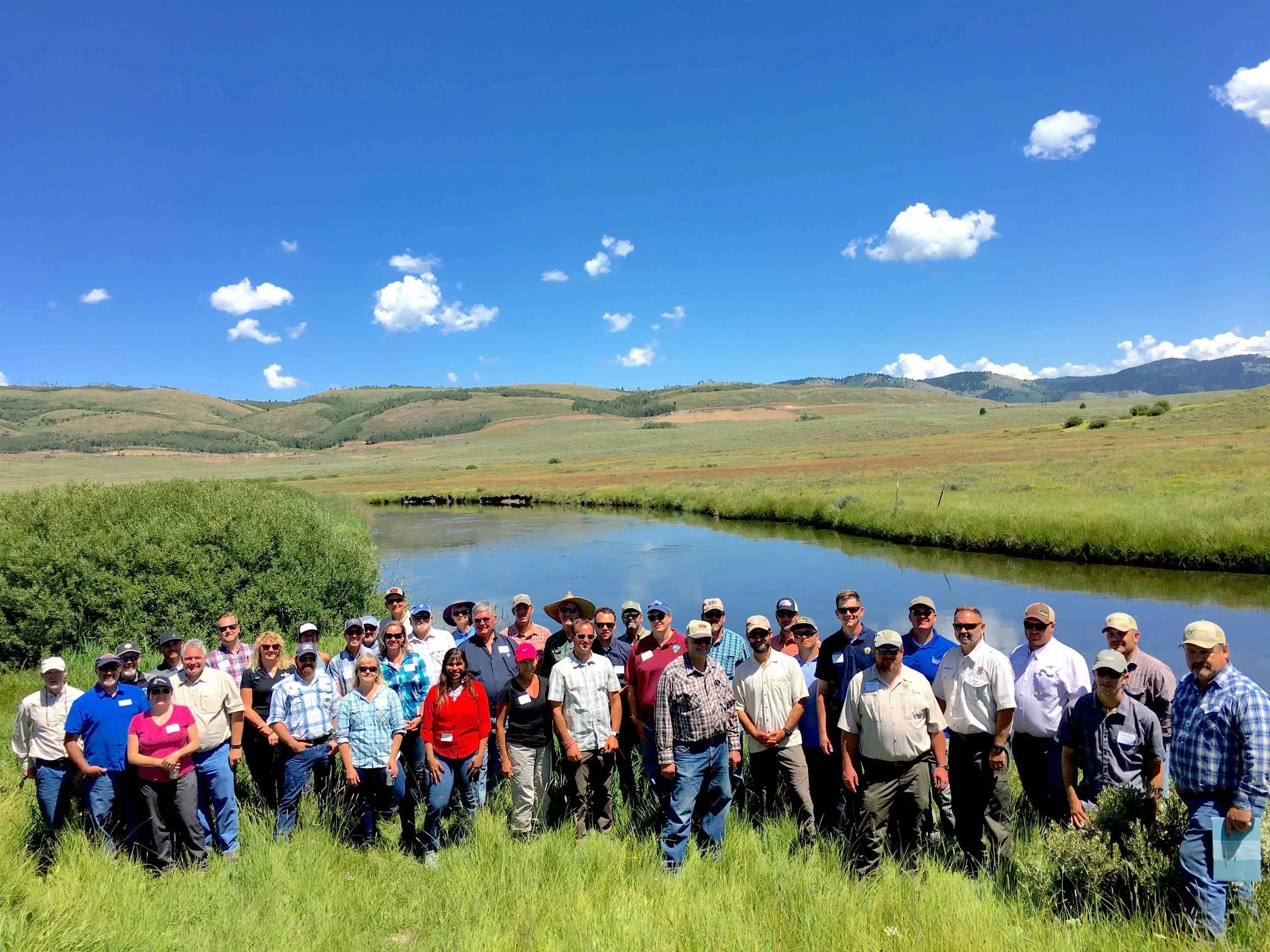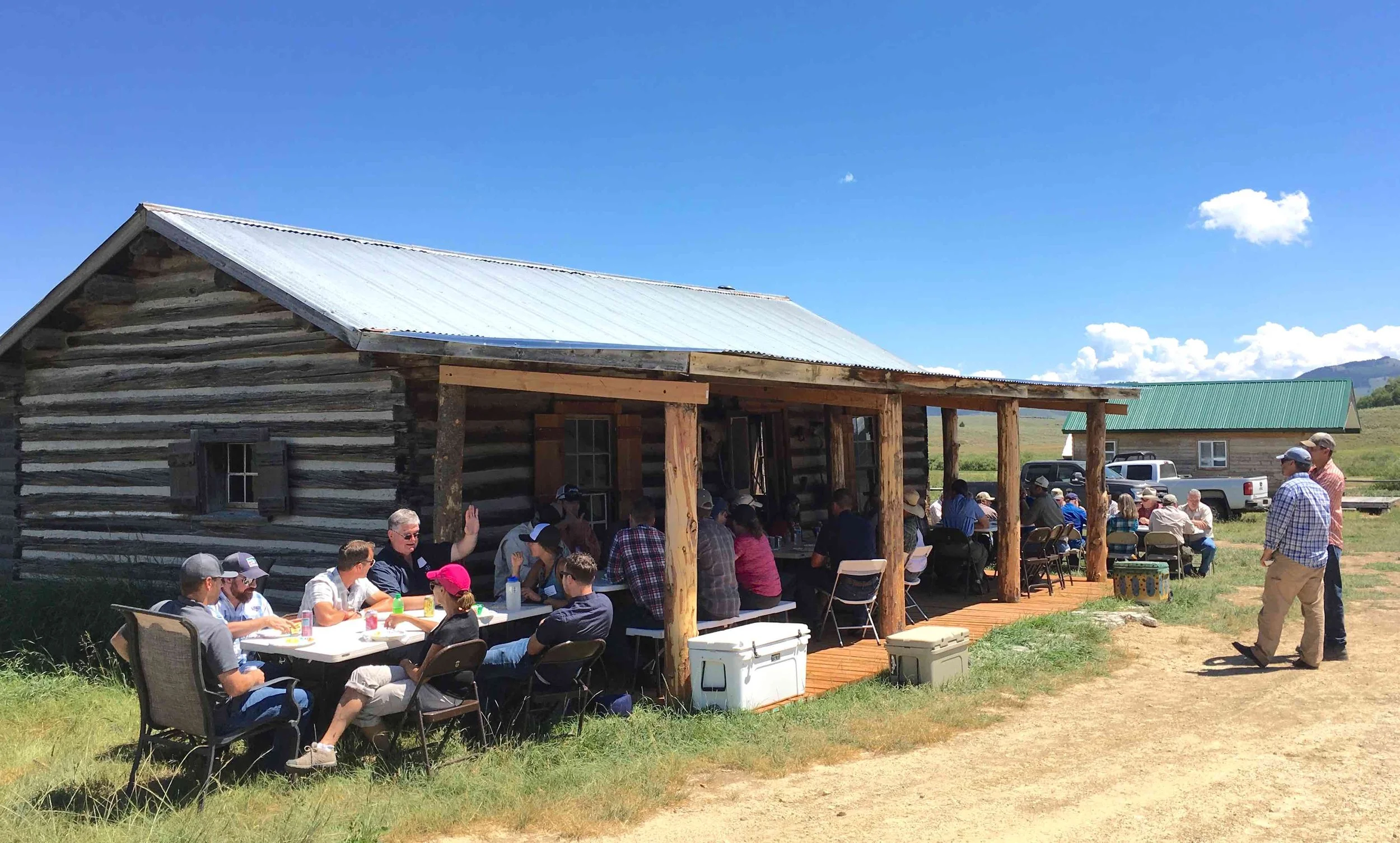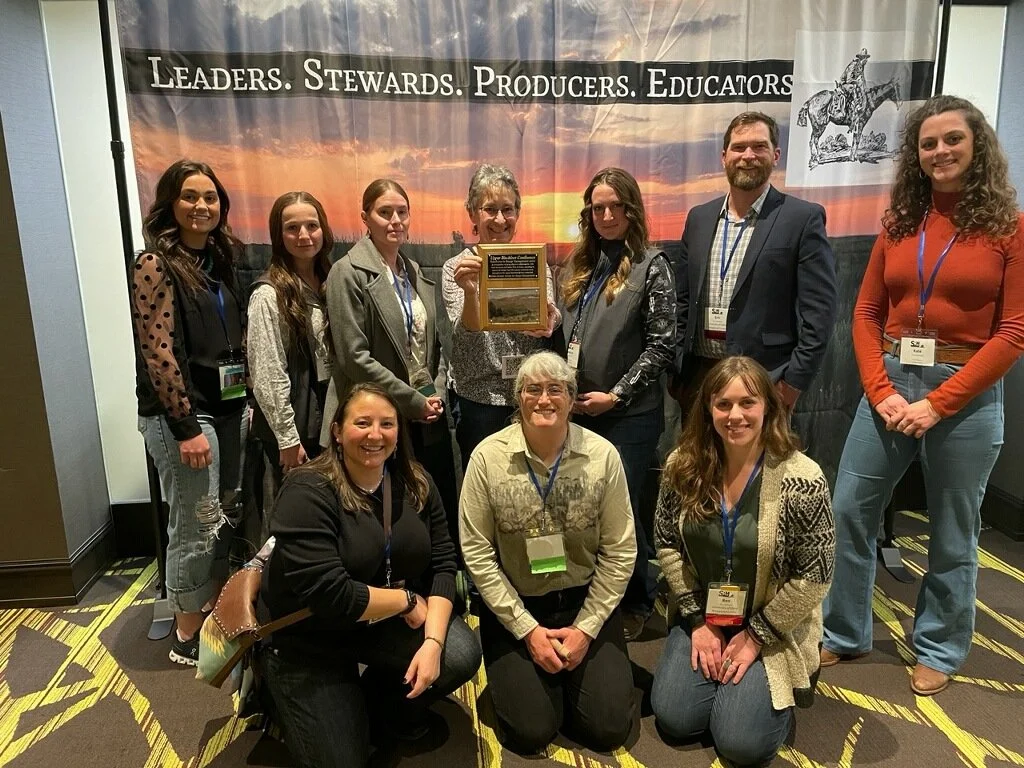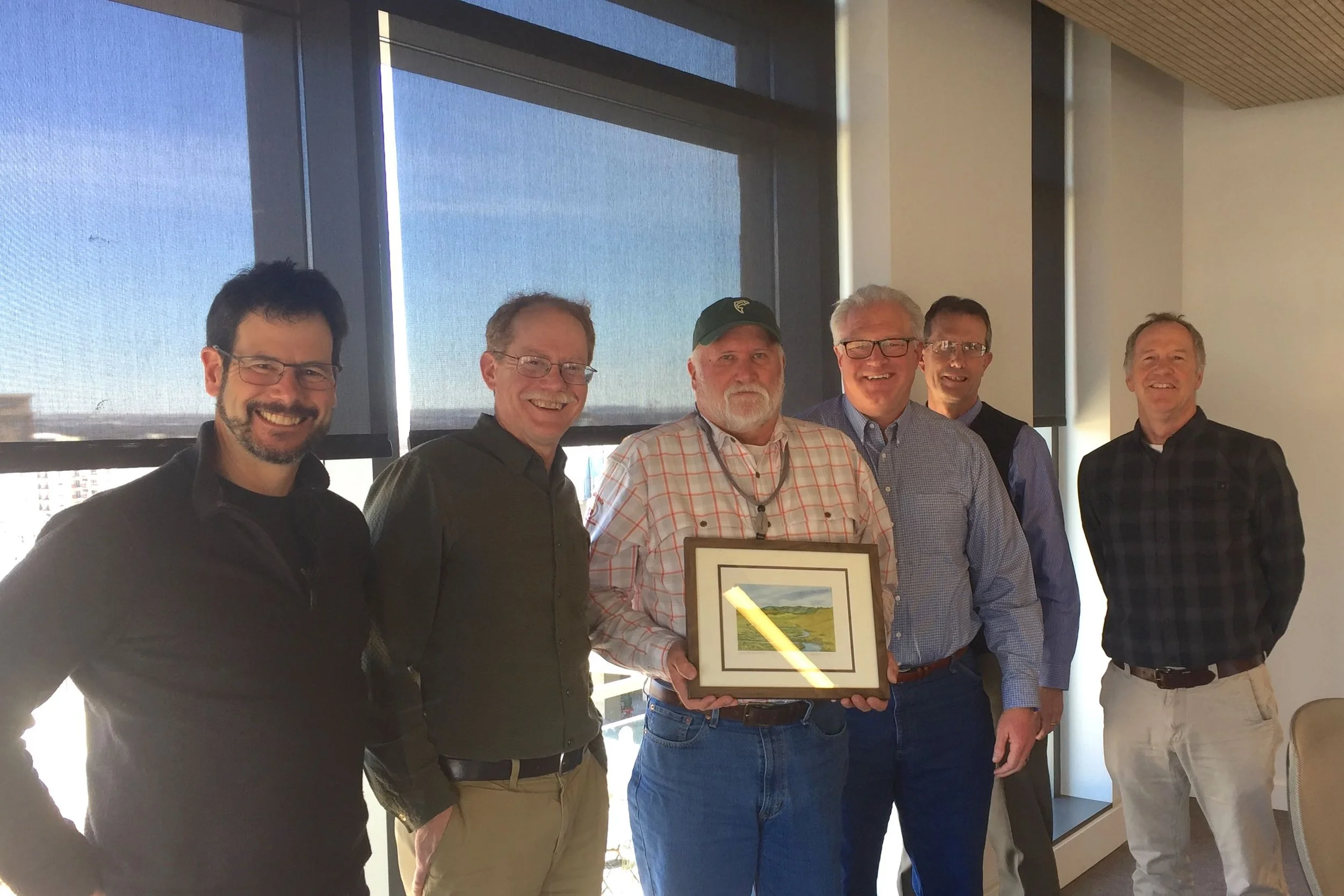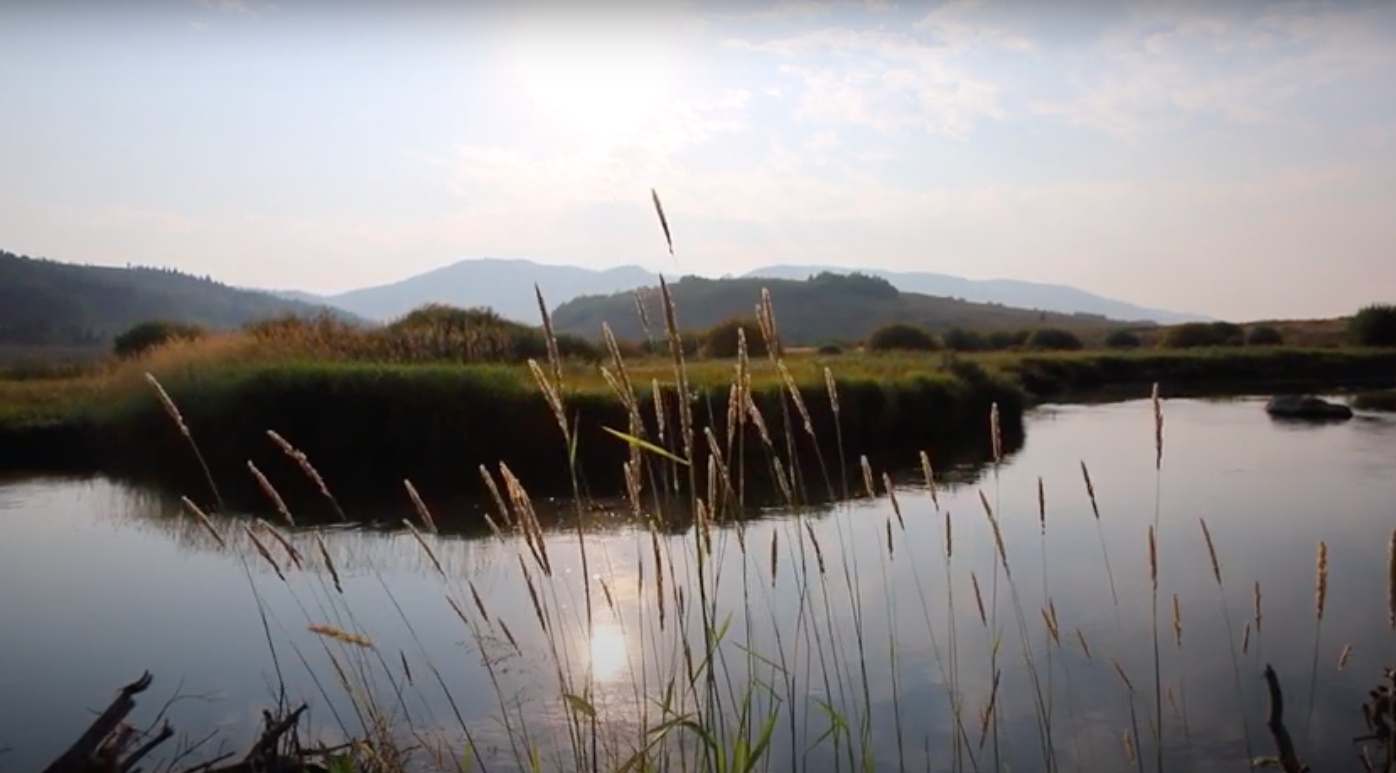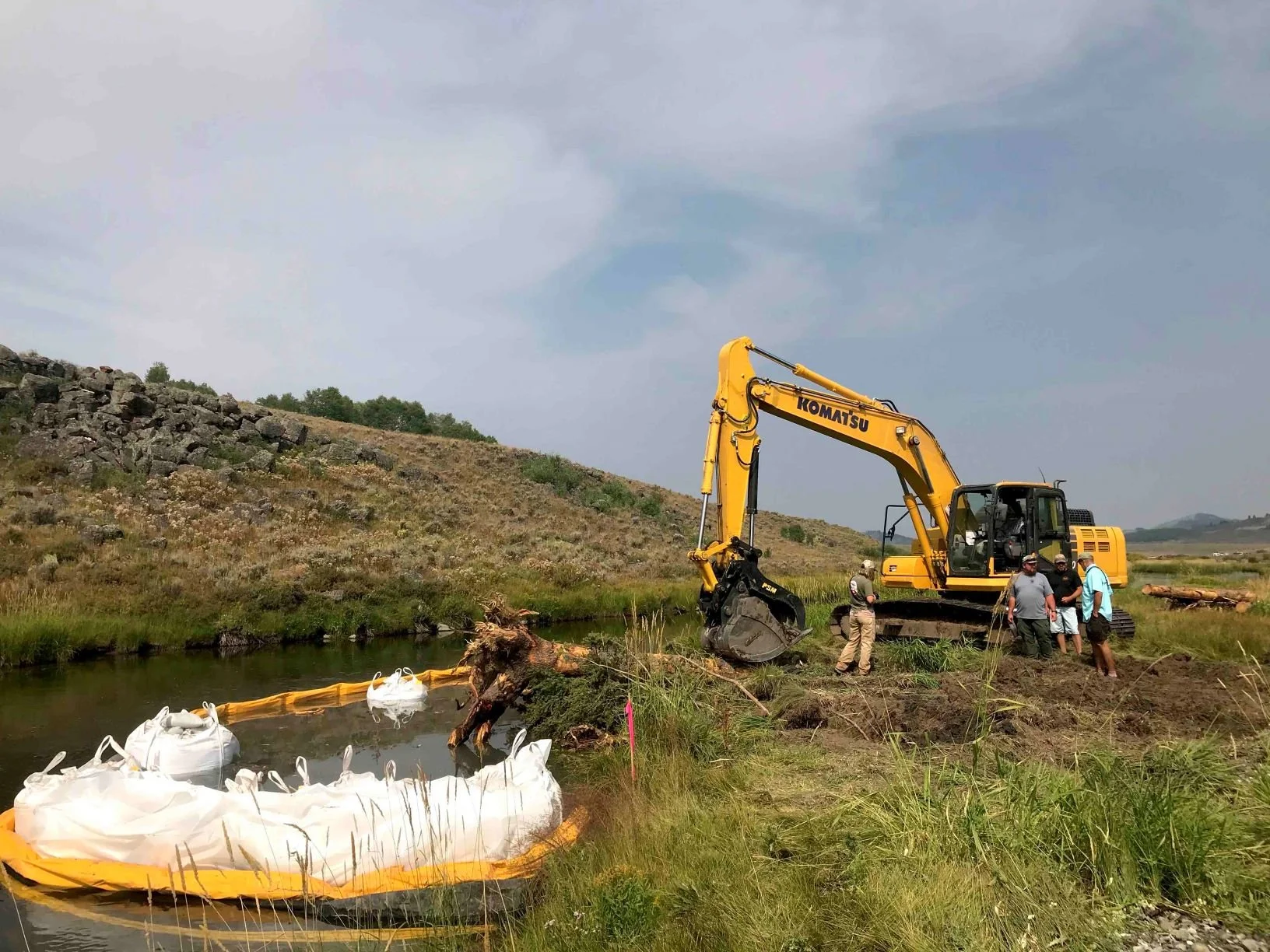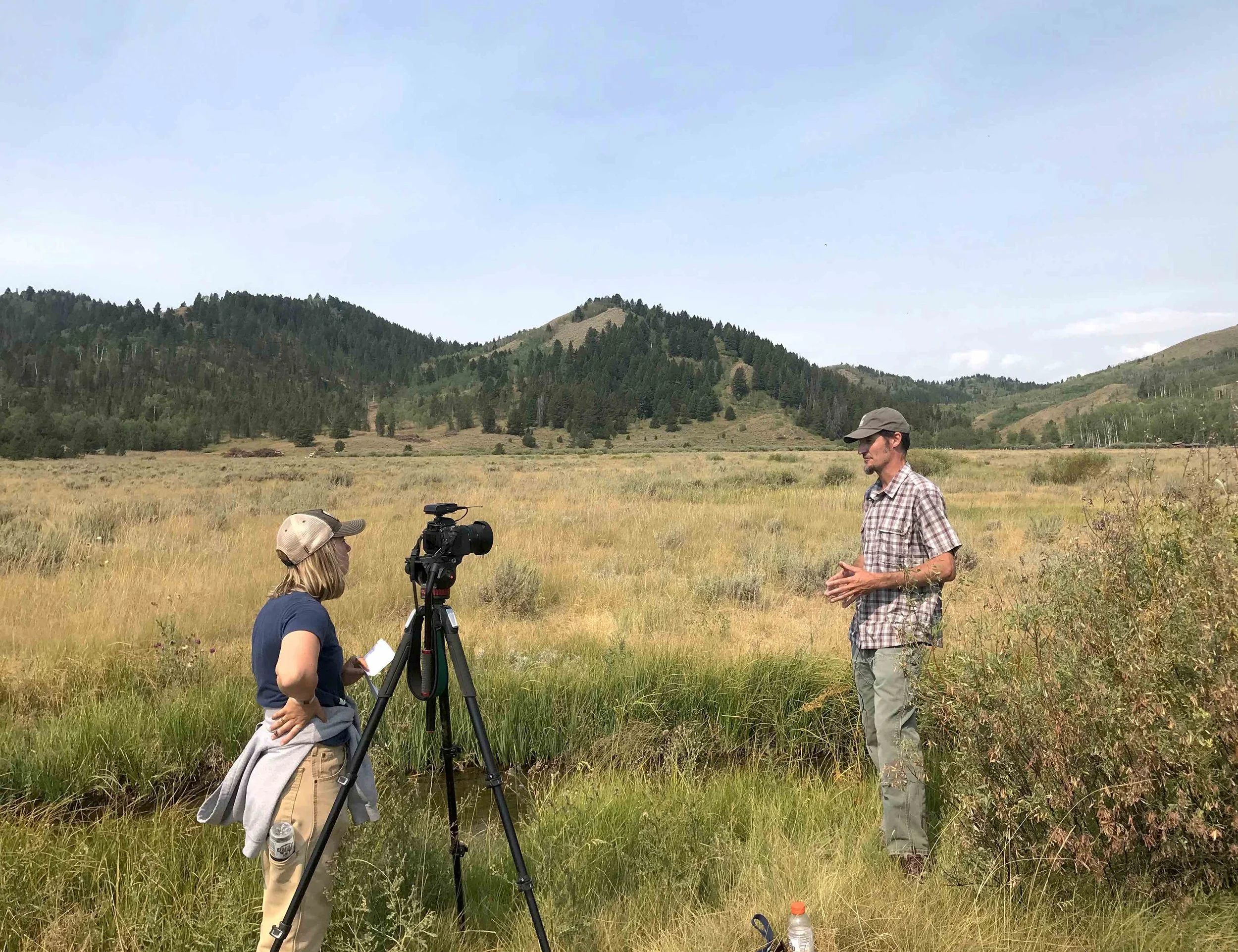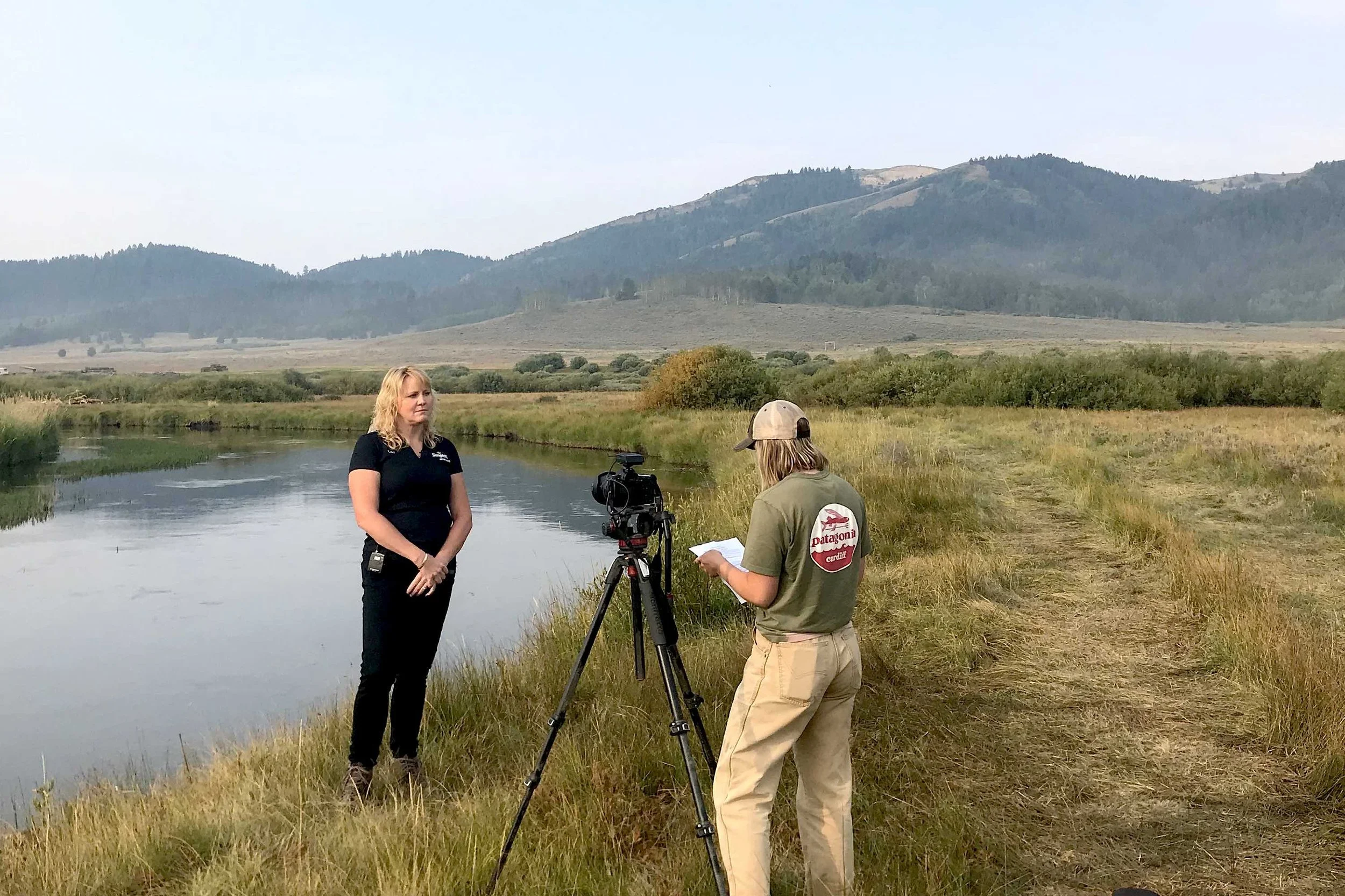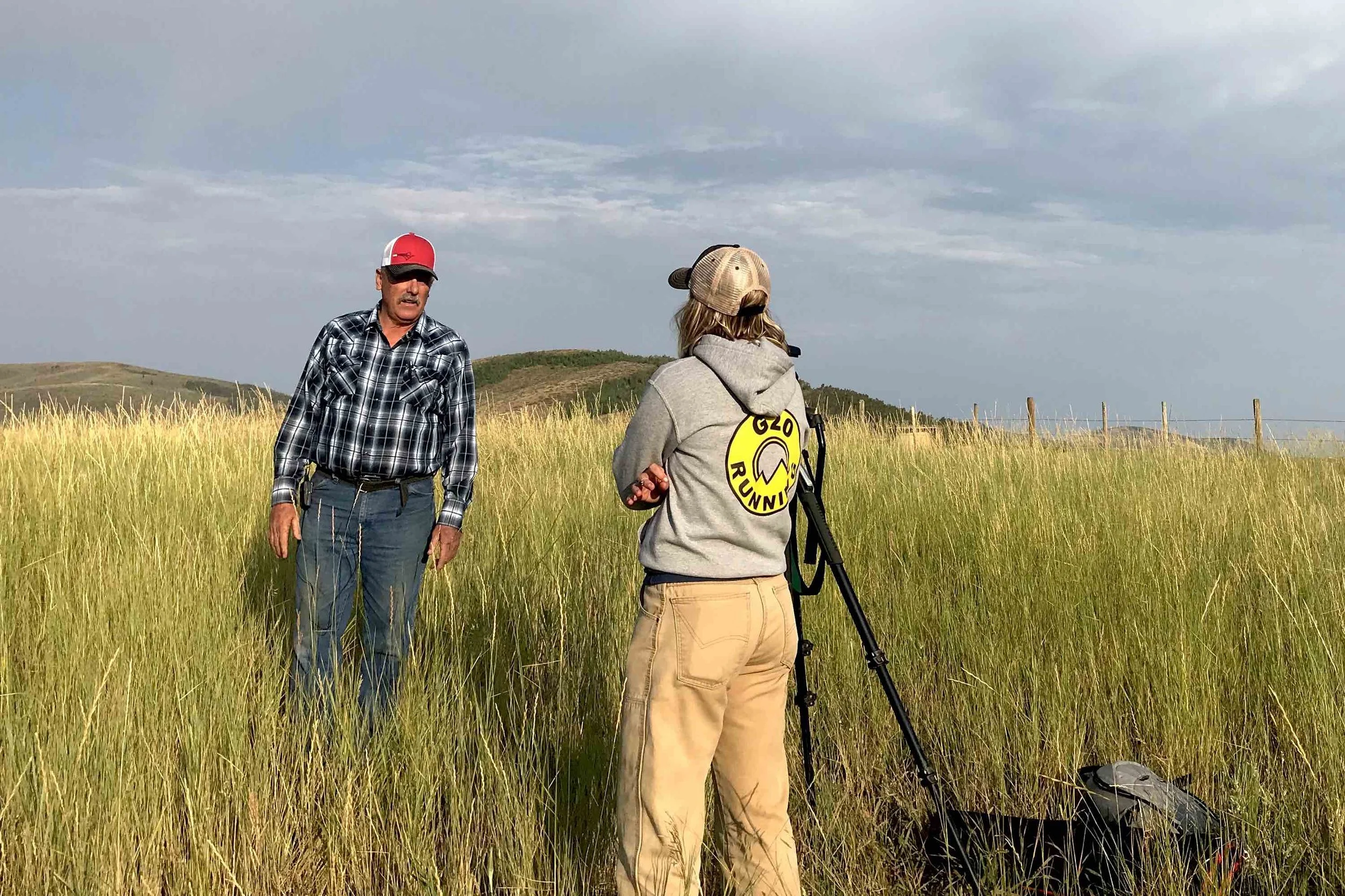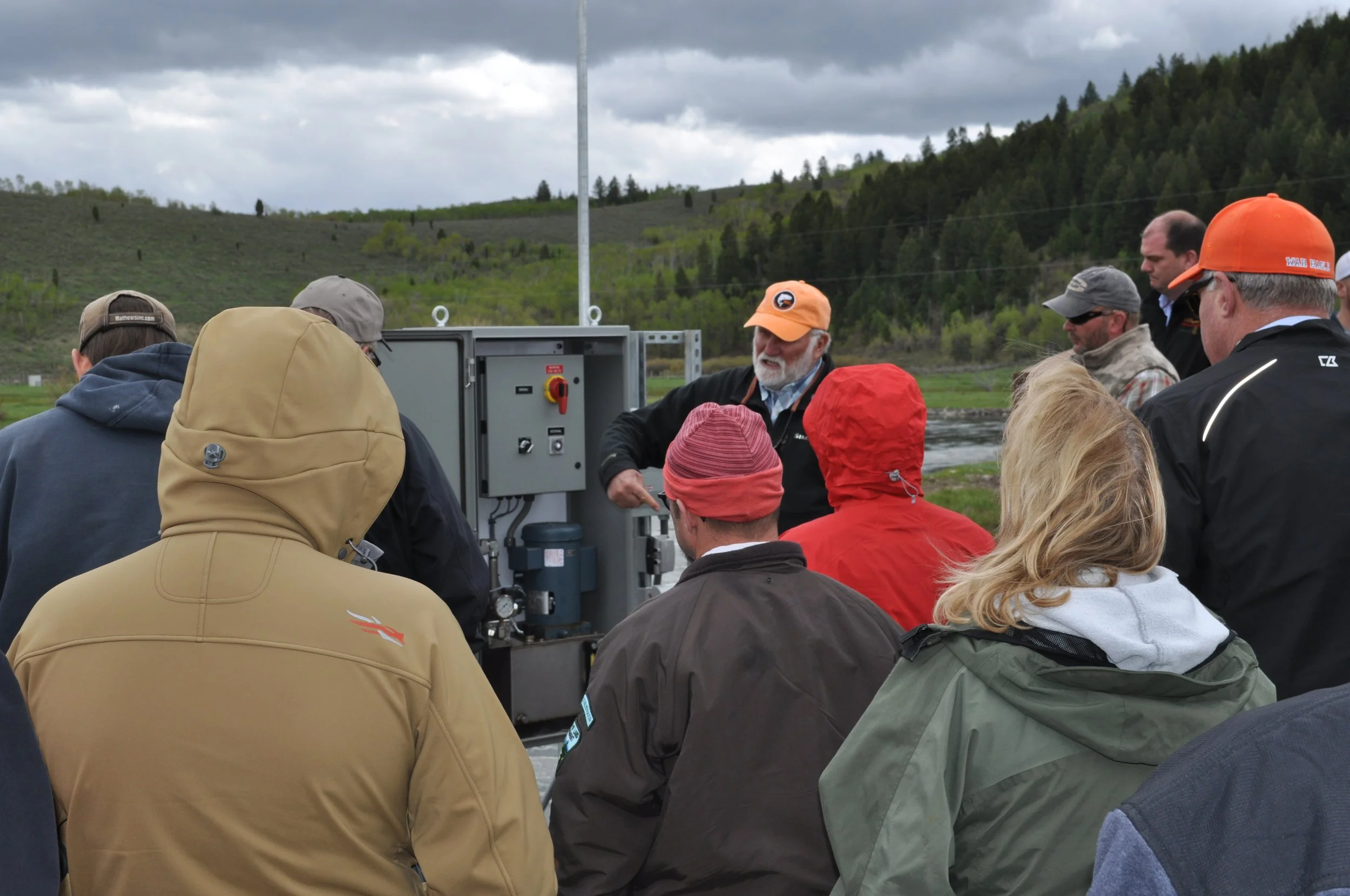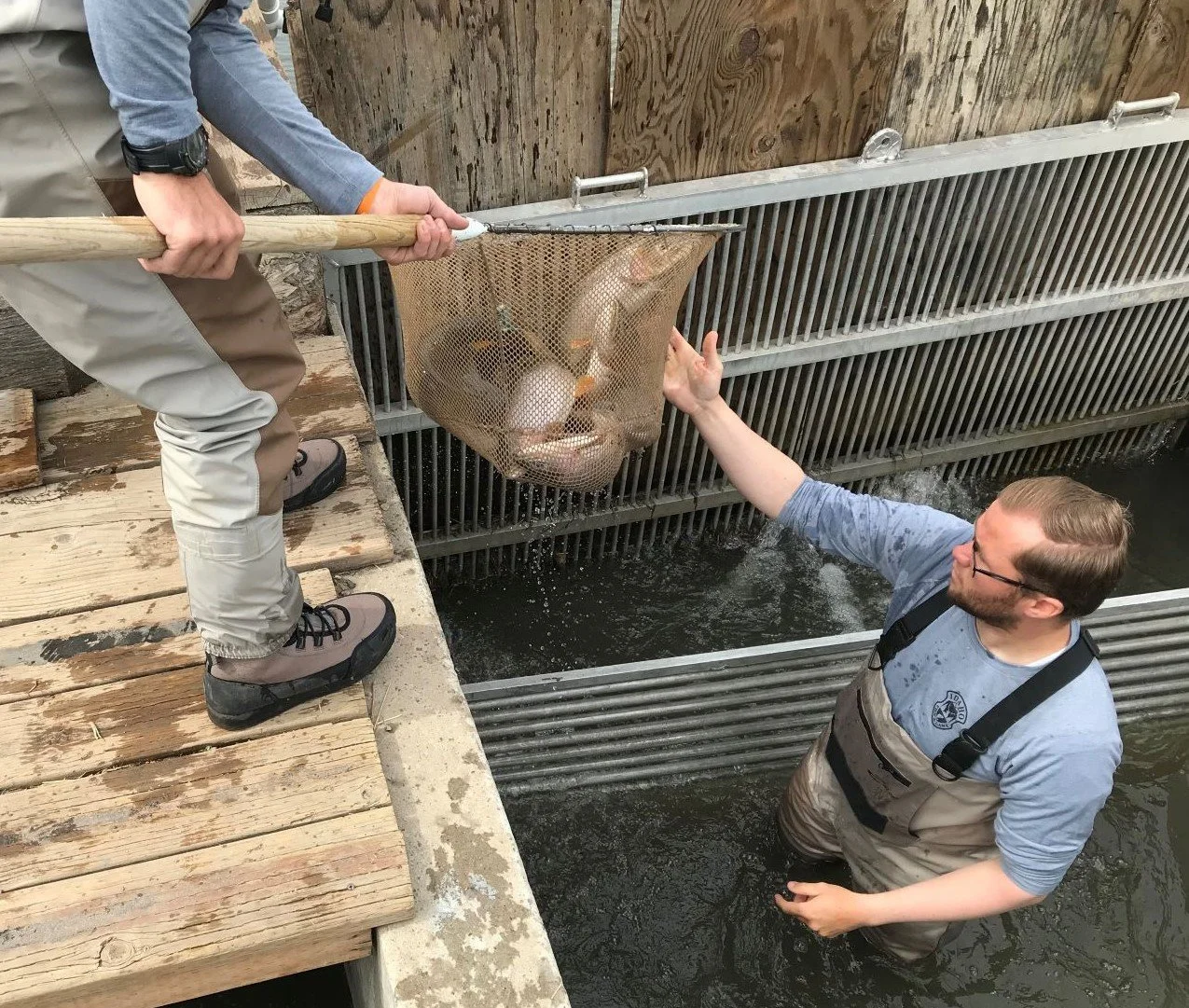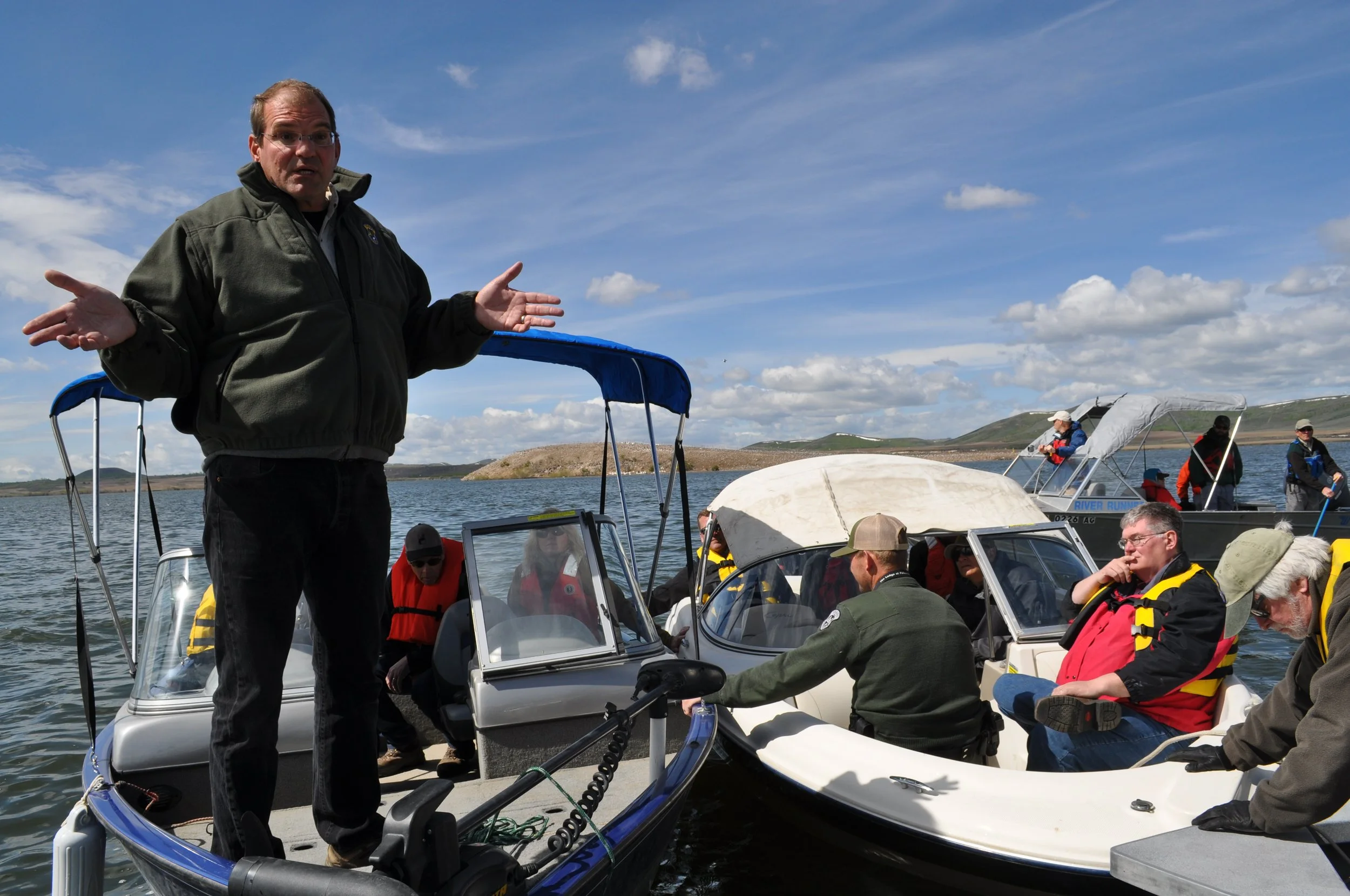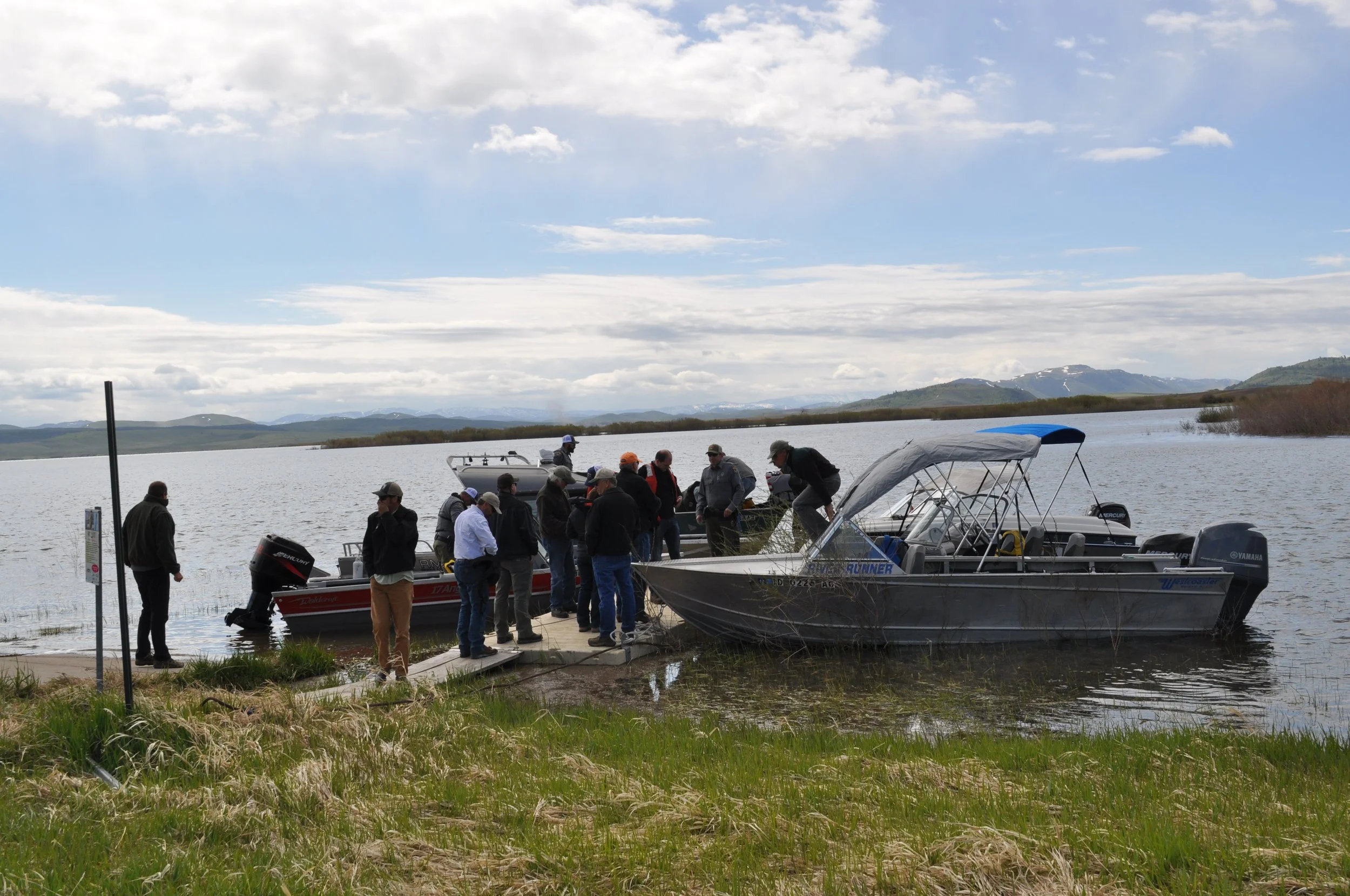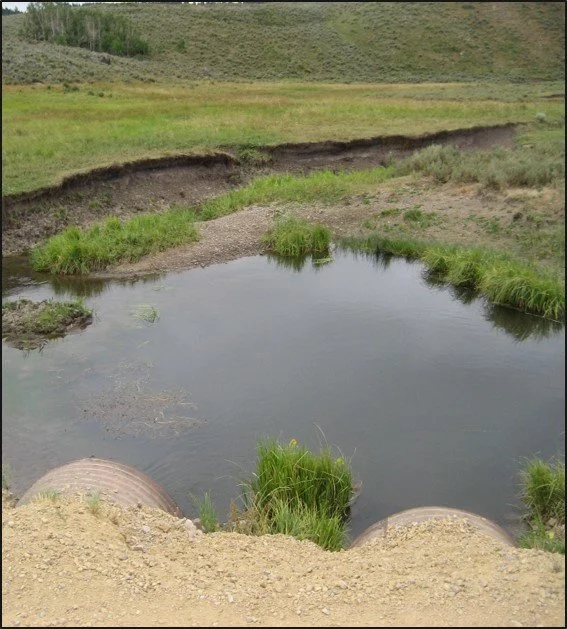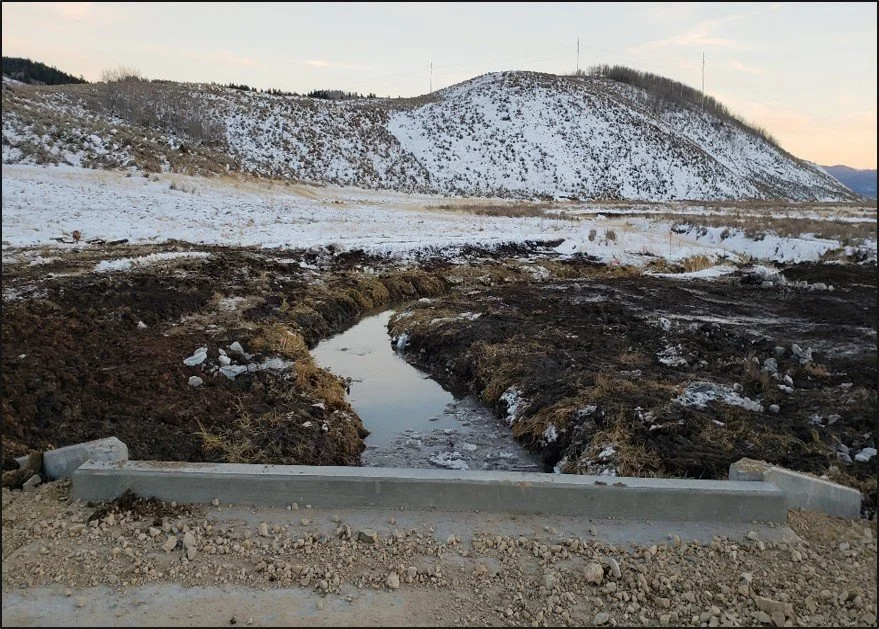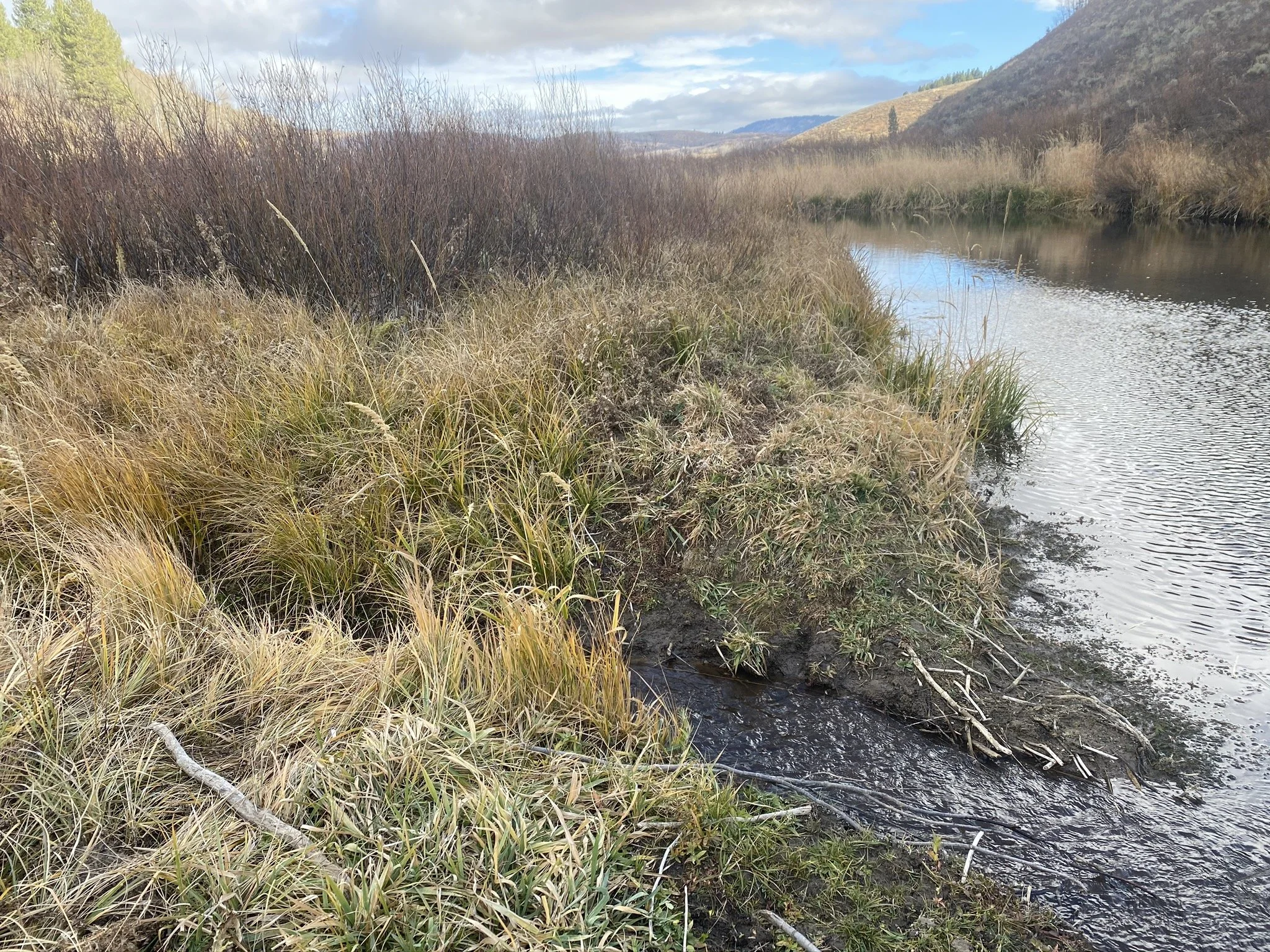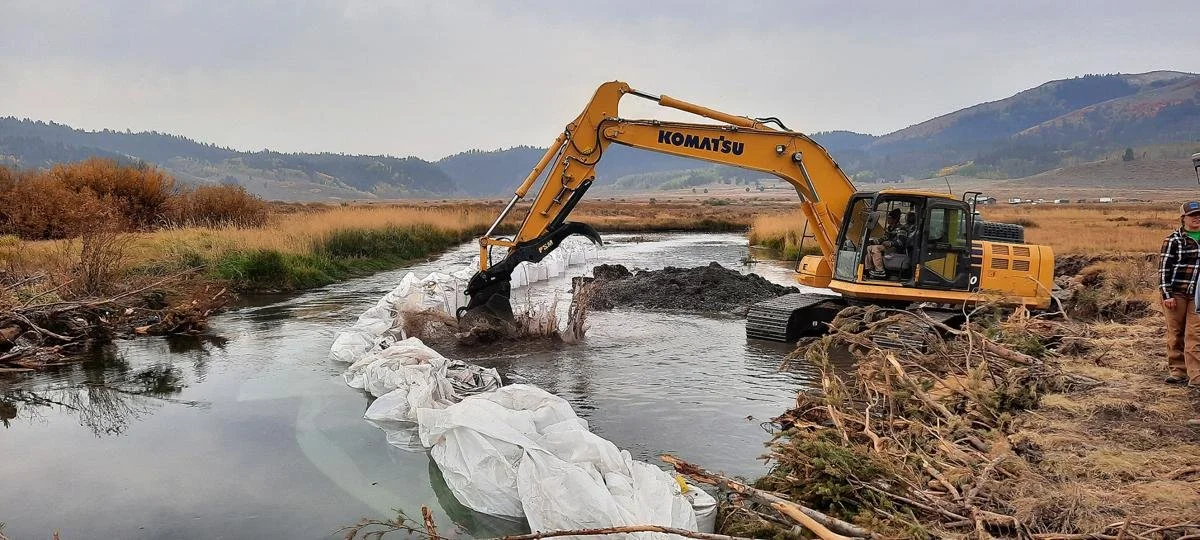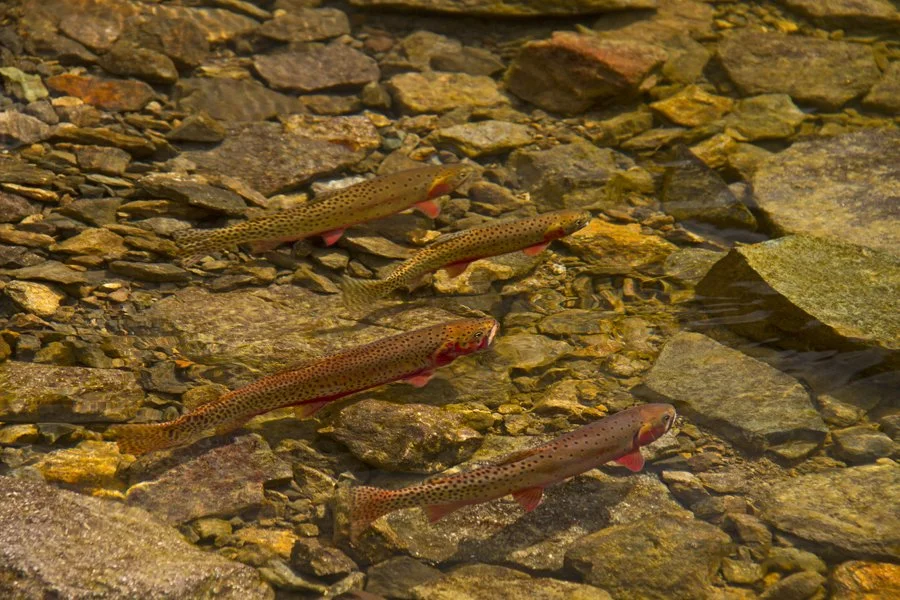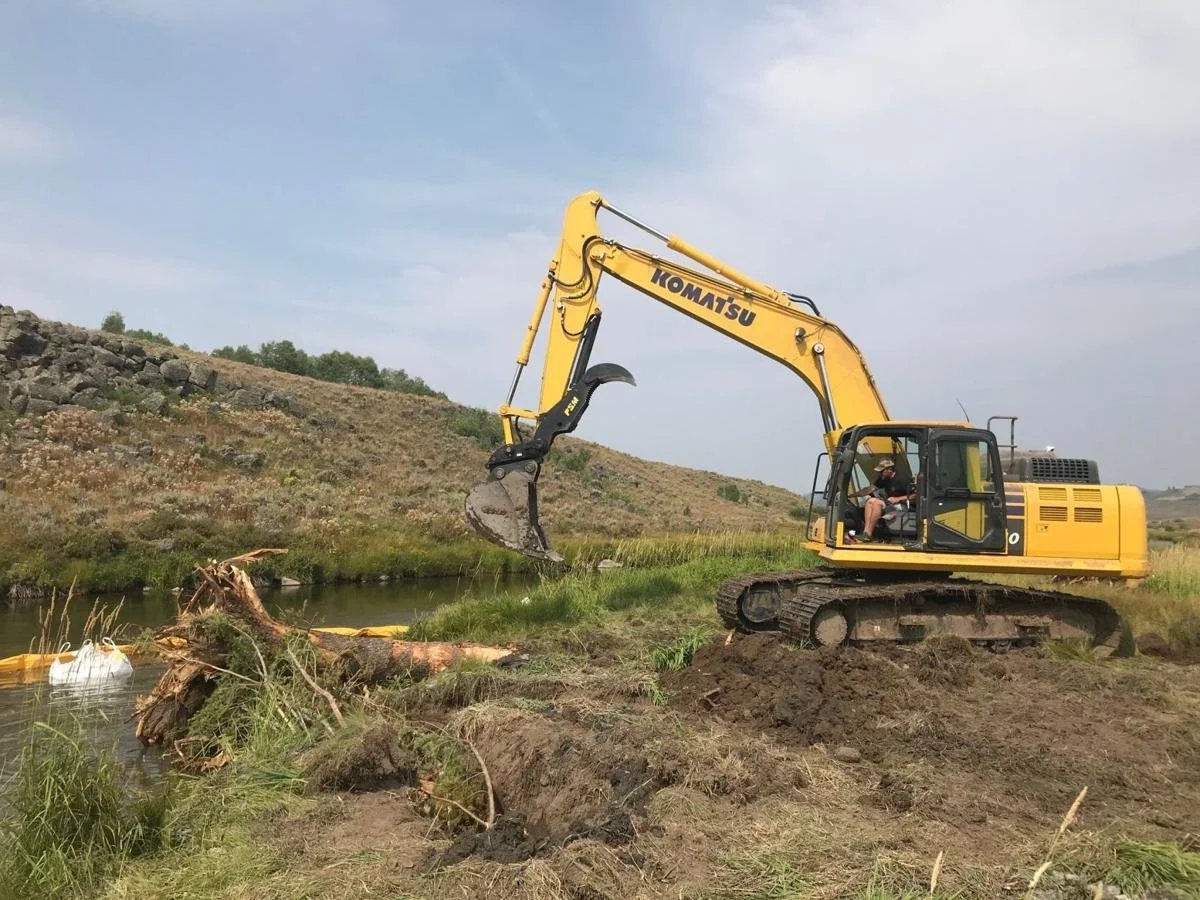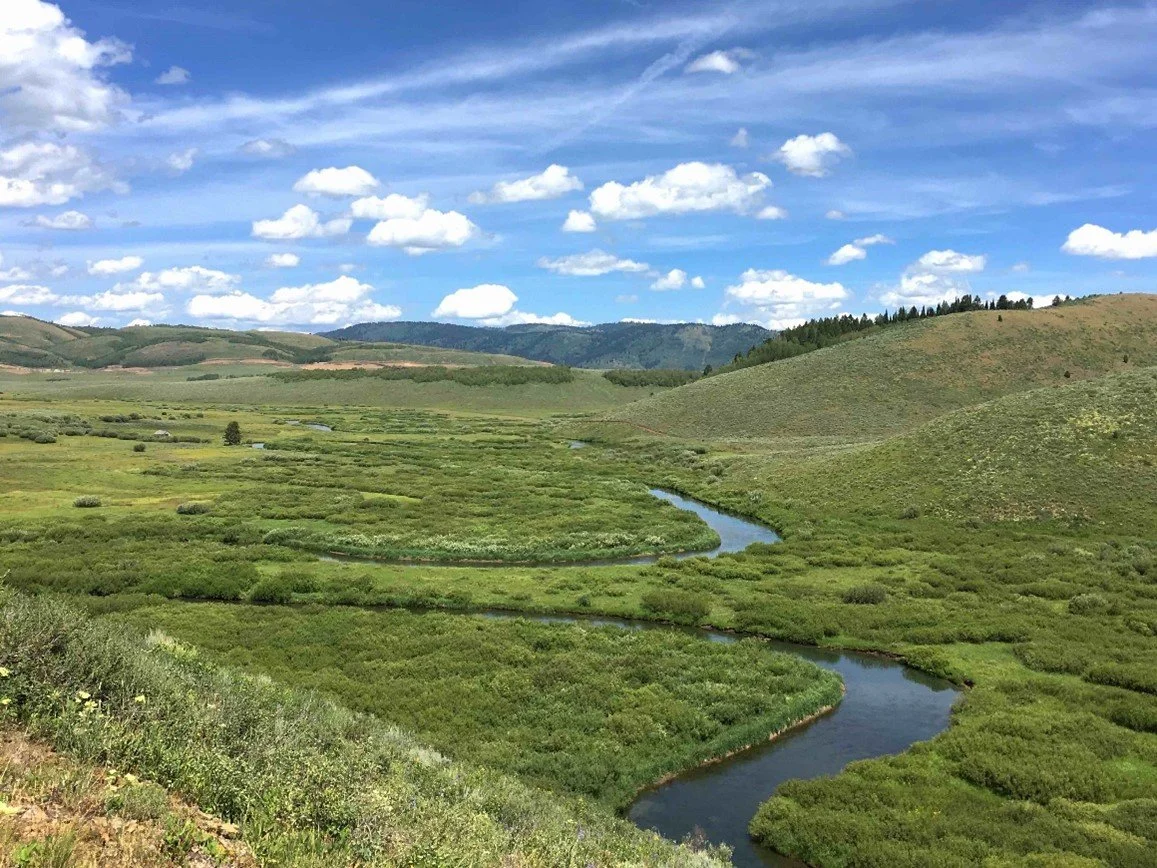
All of our projects are selected according to rigorous assessments of habitat conditions and fish passage obstacles as well as analyses of data on fish populations.
Our projects are developed and selected to improve stream health and trout habitat based on a comprehensive assessment of habitat conditions and needs in the Upper Blackfoot River Basin.
Priorities for 2025
Priority #1 - Strategic Project Management and Development
Funding will support Trout Unlimited staff in advancing current UBC projects and launching new restoration initiatives, including Diamond and Kendall Creek restoration, a carbon sequestration study, Sheep Creek project design, and 2025 redd counts to monitor native trout.
Priority #2 - Permitting for Avian Mitigation and Habitat Restoration
TU will complete a cultural resource survey and permitting for Phase 1 of the Blackfoot River Avian Mitigation and Habitat Enhancement Project. These critical pre-construction
Priority #3 - Weed Control Through Community Action:
UBC will fund the 12th consecutive year of support for the Highlands Cooperative Weed Management Area, helping local landowners combat invasive weeds during widely attended spray days throughout the watershed.
“I’ve seen habitats for native Yellowstone Cutthroat Trout improve with newly developed channel features and established overhead vegetation. The impacts have gone beyond habitat and have brought various partners and stakeholders together, benefitting individual and collective goals. It’s a unique partnership that benefits a broader community.”
— Hannah Murphy, Trout Unlimited
Successful
Past Projects
-
This project will improve fish habitat throughout two miles of the mainstem Blackfoot River by stabilizing 2,500 feet of badly eroding streambanks. Overhead cover for fish will be improved by installing large root wads and whole clump willow plantings along the streambanks. Increasing streambank stability will greatly reduce a large sediment source, improve fish habitat, increase aquatic insect production, and provide trout cover and protection from avian predation. This project will then address the two major limiting factors for the Upper Blackfoot River fishery: sedimentation and avian predation.
-
UBC provided funding to the Idaho Department of Fish and Game (IDFG) for an ambitious, multi-year project to restore the six-mile reach of the Blackfoot River that flows through the IDFG’s wildlife management area (WMA). UBC was the initial underwriter of the project’s design work but is now just one of several funders for the project’s implementation phase.
The Blackfoot River WMA is located approximately 18 miles northeast of Soda Springs and includes the uppermost reach of the Blackfoot River, immediately downstream of the confluence of Lanes and Diamond Creek.
Project Objectives:
1. Decrease stream temperatures
2. Decrease fish predation (i.e. pelicans)
3. Prevent further incision and encourage a self-sustaining aggrading channel
4. Decrease fine sediment loading in downstream section of reach
5. Reactivate floodplains and remnant channels
6. Increase pool habitat
7. Maintain navigabilityPhase I: The 2020 work will focus on stabilizing eroding streambanks to reduce sediment reaching the river, placing trees and boulders in the stream and along the banks to provide more diverse habitat for trout, constructing riffles, and planting willows. Expected benefits:
Immediate enhancement of fish habitat in channel and riparian areas.
a. Increased ability for lateral channel migration and off-channel microhabitat formation.
b. Enhancement of riparian vegetation community biomass and diversity.
c. Immediate reduction in sedimentation rates.Reduction in Pelican predation rates on Yellowstone cutthroat trout (YCT).
Maintaining of traditional land use practices in adjacent uplands with meaningful benefits to YCT.
Strengthened relationship with local livestock producers, private landowners, and mining industry partners in the basin.
Phase II: IDFG broke ground on the project in late 2019 and conducted restoration work on 2 miles in 2021. The 2021 work will continue to focus on stabilizing eroding streambanks to reduce sediment reaching the river, placing trees and boulders in the stream and along the banks to provide more diverse habitat for trout, constructing riffles, and planting willows.
When completed this will be one of the largest stream restoration projects in Idaho and will give a major boost to the Blackfoot River Wildlife Management Area’s habitat for Yellowstone cutthroat trout.
-
The Chippy Creek stream crossing on the Lanes Creek Cutoff Road was identified as a high priority for restoration by the U.S. Forest Service during their Upper Blackfoot Watershed Analysis. An undersized crossing was causing channel instability and loss of aquatic habitat. Nearly 700–1,000 ft of channel has been lost near the crossing. Caribou County identified this as the highest priority for replacement in the upper Blackfoot drainage.
The Chippy Creek stream crossing structure replacement portion of this project was completed during the week of November 7, 2018. We replaced the existing undersized crossing consisting of 2 squash pipes (36ft long by 3 ½ft x 5 ½ft) with a concrete box culvert (15ft x 6ft) and add two floodplain culverts to handle a 100-year peak flow event.
Bridge was installed in Nov. 2018, but the floodplain culverts remain as there was hopes of reusing the existing culverts for the floodplain culvert. Corroded conditions of those culverts did not allow them to be salvaged and reused. We constructed a natural channel within the box and placed cobble-gravel substrate approximately one foot deep to form the channel bed.We also elevated and stabilized approximately 300 ft of channel downstream from the crossing when we installed the new structure. The remaining ~5,000 feet of stream channel work will be completed in 2019, including a total of 2,210 ft upstream from the structure and 3,118 ft downstream from the structure.
The cumulative benefits of the project include (1) improved fish passage, (2) reduced erosion, (3) flood mitigation and road protection, and (4) restored stream function and stability due to increased channel length and floodplain reconnection. The channel and floodplain elements also restore streamside vegetation and adjacent wetland complexes that were lost when the stream down-cut.
Phase II: UBC is funding Trout Unlimited and the U.S. Forest Service to restore the final 1,200 feet of Chippy Creek upstream of the Lanes Cuttoff Road in coordination with the private landowner. The project will also install a new floodplain culvert on Chippy Creek at the Lanes Cutoff Road to accompany the concrete bridge installed in 2018. TU will use funds from the USFWS to purchase the new culverts. This builds on the stream restoration and bridge replacement work completed in 2018-19.
-
Phase II (2019): Replacing three aging bridges over Diamond Creek Bridge is a high priority in the U.S. Forest Service’s Upper Blackfoot Watershed Analysis. 2019 UBC funding will go to replace Diamond Creek bridge #1, which was constructed in 1961. This project is the highest priority for Caribou County.
Phase III (2020): This project will relocate 1,500 feet of the Diamond Creek Road (FS1102) from a frequently flooded area near the creek to the outer edge of the valley bottom. This portion of road several miles south of the intersection with the Lanes Creek Road is flooded due to high water and beaver dams along the creek at least annually. This causes erosion, sediment inputs to the creek, and unsafe driving conditions. Diamond Creek contains native Yellowstone cutthroat trout and other sensitive and important aquatic species that would benefit from the proposed restoration project.
This project is designed to permanently address the problem by relocating 1,500 feet of road to the east (100-150 feet) to the outer edge of the valley bottom. The objective of the project is to increase public safety, restore 0.7 acres of riparian and wetland habitat, increase floodplain function, improve water quality, reduce annual maintenance and allow beavers to naturally develop their habitat. The relocation and restoration would be achieved through a partnership involving Caribou Targhee NF, Caribou County, Upper Blackfoot Confluence (UBC), Lower Valley Energy and others.
-
The main stem Blackfoot River corridor upstream from Blackfoot Reservoir has a history of intensive livestock grazing that has resulted in denuded riparian areas, unstable streambanks and accelerated erosion. Many of these areas have been restored in recent years simply by excluding cattle and allowing vegetation to recover. The Dredge property is one where cattle still have unrestricted access to the river, and, as a result, the streambanks and riparian corridor are currently degraded. The lack of vegetation has accelerated erosion, straightened the channel, and resulted in increased sediment and elevated water temperatures in this reach of the Blackfoot River. Landowner Drew Dredge wants to address these impacts through installing fence and an off-stream watering system to keep cattle out of the riparian area. The watering system will be solar-driven and include five watering troughs. The proposal is for UBC funds to pay for a well, pipeline, watering troughs, solar pump facility, and riparian fence. The Caribou County Soil and Water Conservation District is a primary partner on this project.
Key Objectives:
Construct 3/4 mile of fence along the Blackfoot River to exclude cattle from the riparian area.
Install a well, five off-channel watering troughs, solar pumps, and 2640 feet of conveyance pipe to provide water for cattle away from the river corridor.
Primary Partners:
UBC will provide funding for the Dredge Property Project with possible participation from the Natural Resources Conservation Service (EQUIP Program). The Caribou County Soil and Water Conservation District is a primary partner on this project.
-
UBC contributed $5,000 to the Highlands Cooperative Weed Management Area to control toadflax and other invasive weeds. This is the sixth year of on-going support for the community-based weed management efforts in the Upper Blackfoot.
-
The Kent Allen diversion project was a four-year partnership with the Natural Resources Conservation Service (NRCS) Regional Conservation Partnership Program and landowner Kent Allen. We replaced the existing full-span dam on the main stem Upper Blackfoot River with a submerged concrete sill and incorporated fishway. This structure — coupled with fish screens on both sides of the river — facilitates upstream and downstream fish passage and allows natural fluvial process like sediment and bedload transport to continue. The project also provides more efficient water diversion for Kent Allen with substantially less maintenance.
-
In September 2013, U.S. Forest Service leaders attending the UBC field trip were able to inspect our restoration work on Upper Lanes Creek. As one of two tributaries that form the Upper Blackfoot River, Upper Lanes Creek is critical Yellowstone cutthroat trout habitat. To date, UBC’s most significant restoration efforts have focused there. Later that fall, these U.S. Forest Service leaders recommended undertaking restoration work on upstream tributaries in order to enhance UBC’s ongoing Upper Lanes Creek restoration efforts. These upstream tributaries, located in the Caribou National Forest, are crossed by two recreational trails. Trail #088 crosses three perennial tributaries to Lanes Creek. Trail #022, which ties into Trail #088 and parallels the main stream of Lanes Creek, crosses the stream in an additional three locations and also encroaches on Lanes Creek. These crossings and encroachment contribute to unstable steam banks, riparian degradation, and erosion. Through the Lanes Creek Riparian and Recreational Trail Improvements Project, the U.S. Forest Service is undertaking restoration work that will address erosion, improve water quality and trout habitat, and enhance the ongoing UBC restoration work downstream.
Objectives
Reduce erosion and restore water quality in Lanes Creek by constructing bridges at a total of 6 ATV trail crossings on Trail #088 and Trail #022.
Restore riparian and floodplain function by relocating sections of Trail #022 that currently encroach on Lanes Creek.
Repair degraded and eroding stream banks.
Project Partners
UBC is partnering with the U.S. Forest Service by providing funds that will be used for the work on the main stem Lanes Creek. UBC will also provide the requisite matching funds to leverage the Idaho Department of Parks and Recreation funds for work on the upstream tributaries.
-
The project will provide start-up funds to replace the metal culvert on the Blackfoot River Road at Mill Creek in the Blackfoot Narrows. The current culvert is a barrier to migrating Yellowstone cutthroat that use this small stream for spawning and rearing. The project will replace the culvert with a larger concrete box bridge with a natural bed that will improve fish passage. A resting pool or weir will be designed at the downstream end of the box bridge. The project is a cooperative effort of the U.S. Forest Service and Caribou County.
-
Historically, Sheep Creek supported some of the largest numbers of spawning Yellowstone cutthroat trout from the Blackfoot River found anywhere in the watershed. More recent redd counts show a drastic decline in spawner numbers. Sustained, intensive grazing has degraded habitat. Riparian woody vegetation is now completely absent, resulting in accelerated erosion and a straight, over-wide, and shallow channel. The Sheep Creek channel upstream from the Lanes Creek Road now appears to support almost no Yellowstone cutthroat trout spawning and has even become marginal as a migration corridor to access quality habitat further upstream. The channel’s wide, shallow profile, coupled with the complete lack of cover, significantly increases exposure and predation risk, and in many places the stream lacks enough depth to even be navigable for larger, migratory fish. Partnering with landowner Bear Lake Grazing Company, UBC will undertake the restoration of Sheep Creek.
Key Objectives:
Restore the natural channel profile in Sheep Creek to improve habitat, water quality, and stream function.
Realign the stream channel to reflect historic meander pattern and stream profile.
Manually rebuild streambanks to narrow and deepen the channel.
Repair eroding streambanks by sloping vertical banks and using bio-engineering technique to stabilize raw banks until vegetation gets established.
Re-establish a robust riparian corridor to provide cover and stabilize the restored stream channel.
Transplant willows and other native woody riparian vegetation from nearby sources to re-establish a healthy riparian corridor.
Control noxious weeds along the 2,500 ft of restored channel.
Restore the ability of Sheep Creek to support Yellowstone cutthroat trout spawning and rearing, as well as its function as a migration corridor to access quality habitat upstream in the National Forest.
Expected Benefits:
Immediate protections to quality habitat existing in channel and riparian areas.
Allowance of passive recover in impaired reaches with project area.
Increased ability for lateral channel migration and off-channel microhabitat formation
Enhancement of riparian vegetation community biomass and diversity.
Creation of riparian buffer will trap excess fine sediment and nutrient load budgets.
Reduced sedimentation of areas with suitable spawning and incubation gravels.
Reduced sedimentation of areas containing substrates providing cover and forage for young-of-year Yellowstone cutthroat trout (YCT).
Passive recovery of Sheep Creek will promote more natural stream behavior, this producing improved spawning and early rearing conditions for YCT.
Fence enclosure creates opportunity to implement (with protections) active stream habitat treatments in project area.
Project is designed to promote traditional land use practices in adjacent uplands with meaningful benefits to YCT.
Builds on the existing good working relationship with livestock producers in the basin.
Primary Partners:
Partnering with landowner Bear Lake Grazing Company, UBC will provide funding for the Sheep Creek restoration project. This may be supplemented with funding from the U.S. Fish and Wildlife Service. Trout Unlimited will contribute funding and in-kind assistance.
-
Timothy Creek historically provided critical spawning and rearing habitat for migratory Yellowstone cutthroat trout from the Blackfoot River and supported a robust resident population. However, redd counts in recent years show a drastic decline in spawning use by Yellowstone cutthroat trout. One of the suggested explanations for the decline is habitat degradation in the Timothy Creek stream channel between Diamond Creek and the National Forest Boundary. Not only is spawning habitat now limited in this section, but an artificial stream split at a historical diversion site now dewaters the main channel and limits its function as a migration corridor to access quality spawning and rearing habitat upstream. Partnering with landowner Bear Lake Grazing Company, UBC will take restoration actions to address these impacts.
Key Objectives:
Reconsolidate Timothy Creek into a single channel by repairing a channel avulsion at an historical diversion site.
Install a plug at the channel avulsion to re-route 100% of stream flow back to the historical channel.
Relocate willows and other riparian woody plants from the diversion channel to denuded areas along historical channel.
Facilitate fish passage and improve instream habitat and water quality (i.e. stream temperature) for migratory and resident Yellowstone cutthroat trout by returning 100% of available streamflow to the historical channel.
Continue to monitor stream temperatures above and below the restoration site.
Primary Partners:
Partnering with landowner Bear Lake Grazing Company, UBC will fund the implementation of the Timothy Creek project with additional funding and in-kind contributions from Trout Unlimited.
-
Through the installation of livestock exclusion fencing, off-channel watering facilities, and extensive stream channel restoration, UBC, the Caribou Cattle Company, and other project partners are restoring and protecting nearly 10 miles of the furthest upstream reaches of Lanes Creek.
UBC’s most significant restoration work to date has occurred and is occurring on Upper Lanes Creek. As one of the two tributaries that form the Upper Blackfoot River, Lanes Creek is critical Yellowstone cutthroat trout habitat. At the upstream end of Lanes Creek, historic grazing and agricultural use has reduced riparian vegetation and altered the stream channel, creating excessive erosion and down-cutting of the stream bed. The resulting sediment inputs into the stream and increased width to depth ratio have impaired water quality (temperature, sediment, nutrients) and reduced aquatic habitat. Through this Upper Lanes Creek restoration project, UBC, the Caribou Cattle Company, and other project partners have and will continue to restore and protect nearly 10 miles of the furthest upstream reaches of Lanes Creek on privately owned land.
Primary Objectives:
Restore and protect riparian habitat along 10 miles of Upper Lanes Creek that abuts the Caribou Targhee National Forest
Construction of 25,000 ft of livestock exclusion fence to protect 62 acres of riparian habitat.
Development of 6 off-channel watering facilities to better dispute livestock across the landscape.
Improve water quality in Upper Lanes Creek by reducing erosion and associated sediment and nutrient inputs into the stream.
Stream habitat improvement along more than 2 miles of stream channel.
Restoration of native woody vegetation along 12,800 ft of channel.
Stream bank bio-engineering stabilization on 6,750 ft of channel.
Noxious weed control on 200 acres.
Improve instream habitat by installing grade control and habitat structures to restore hydrologic function.
Facilitate fish passage, restore stream function, and reduce erosion at two road-stream crossings (culverts) on Upper Lanes Creek.
Key Partners:
UBC and the Caribou Cattle Company are working with multiple partners on the Upper Lanes Creek restoration project. Prior to UBC involvement, the Caribou Cattle Company paid a private contractor to design the restoration project. Ranked as the top priority for the Natural Resources Conservation Service (NRCS) three years ago, the project remains a priority and the local NRCS District Conservationist has applied for Wildlife Habitat Improvement Program funding. The Caribou Cattle Company is contributing in-kind assistance for construction including personnel, equipment, materials, and supplies. In addition to this in-kind contribution, the Caribou Cattle Company is willing to reduce the number of livestock on the land. The Idaho Department of Environmental Quality is also contributing funds and Trout Unlimited is contributing in-kind assistance with project management, administration, and monitoring. With the Upper Lanes Creek restoration project proceeding successfully, agency and landowner partners are impressed with our progress and supportive of our efforts.

